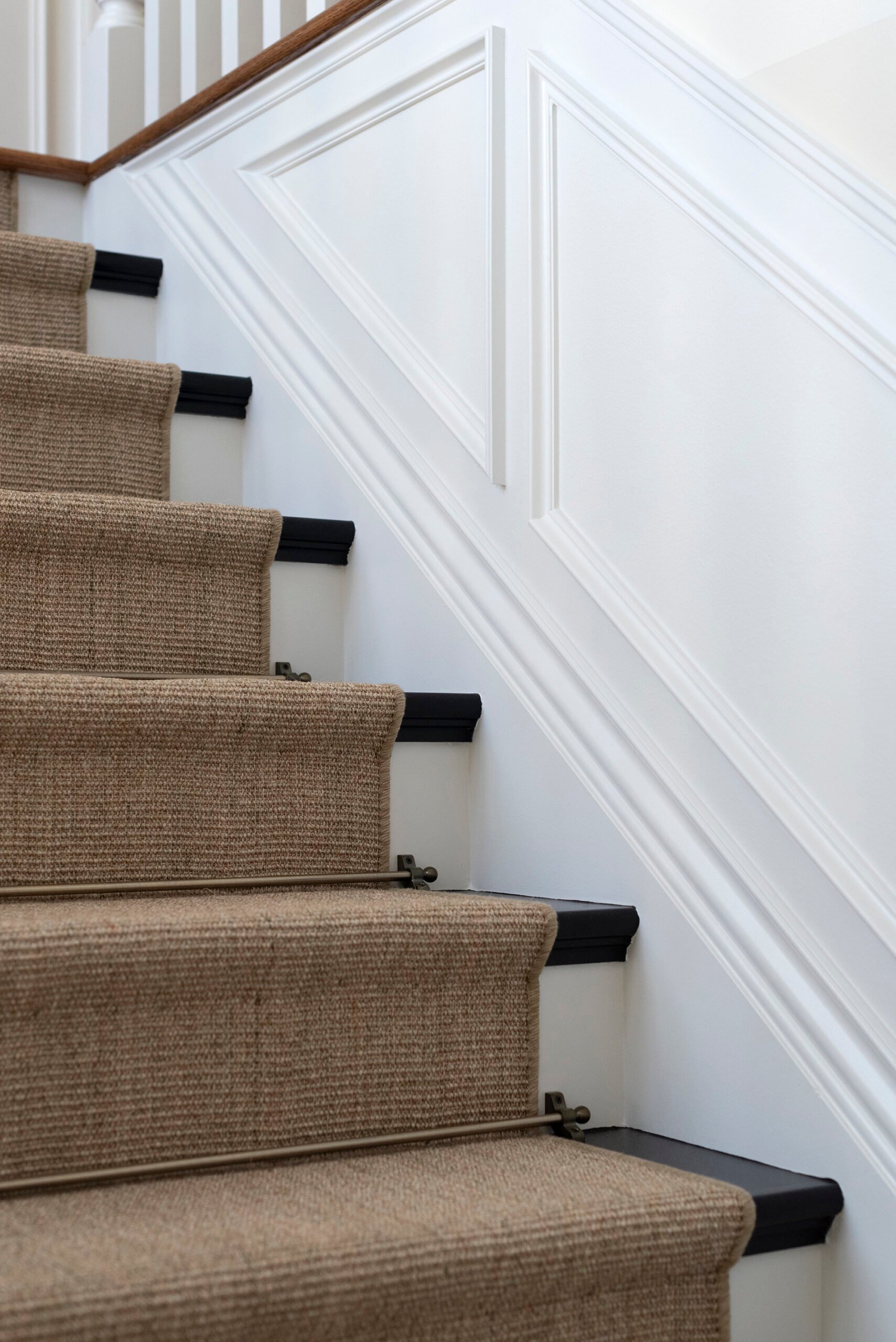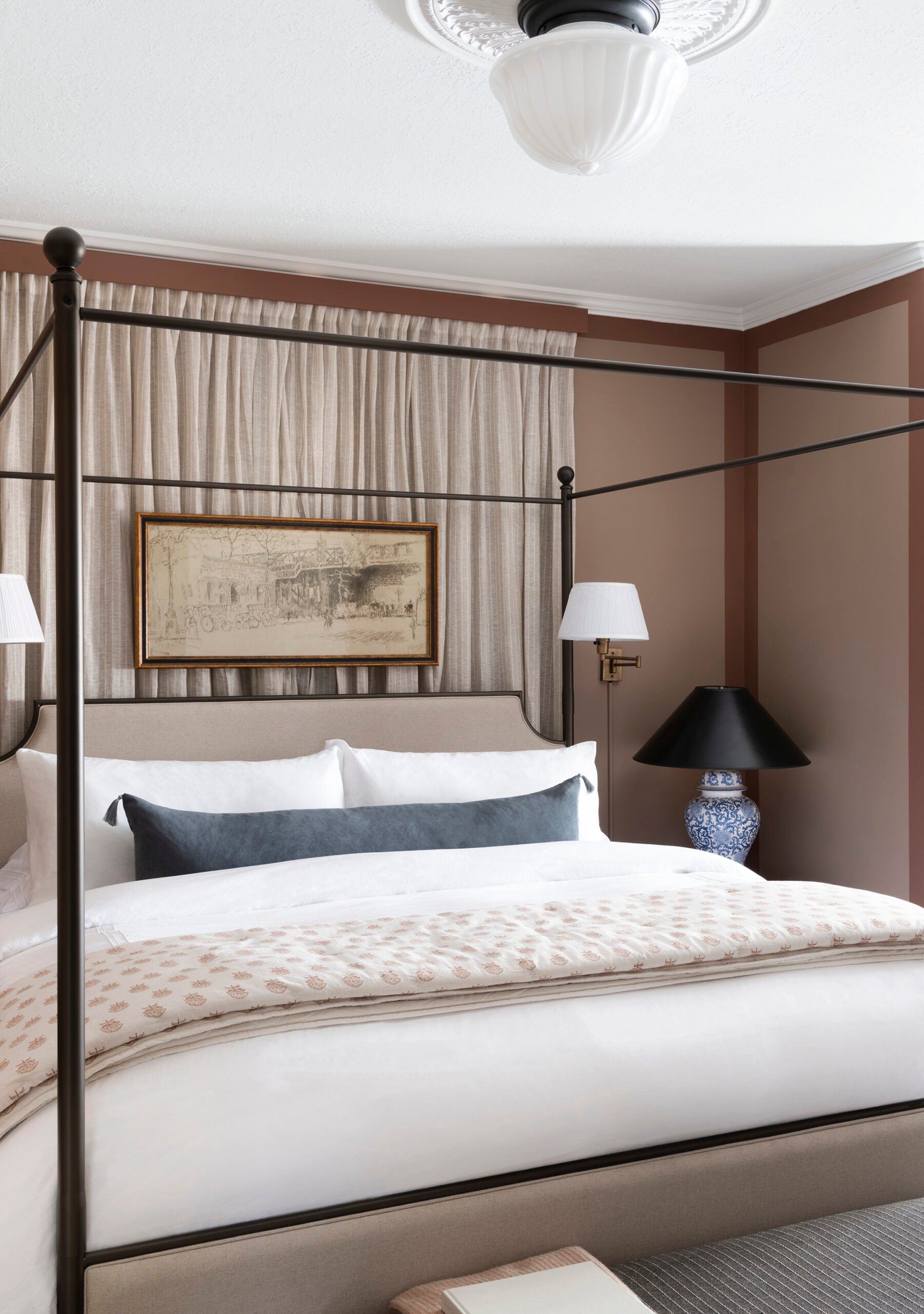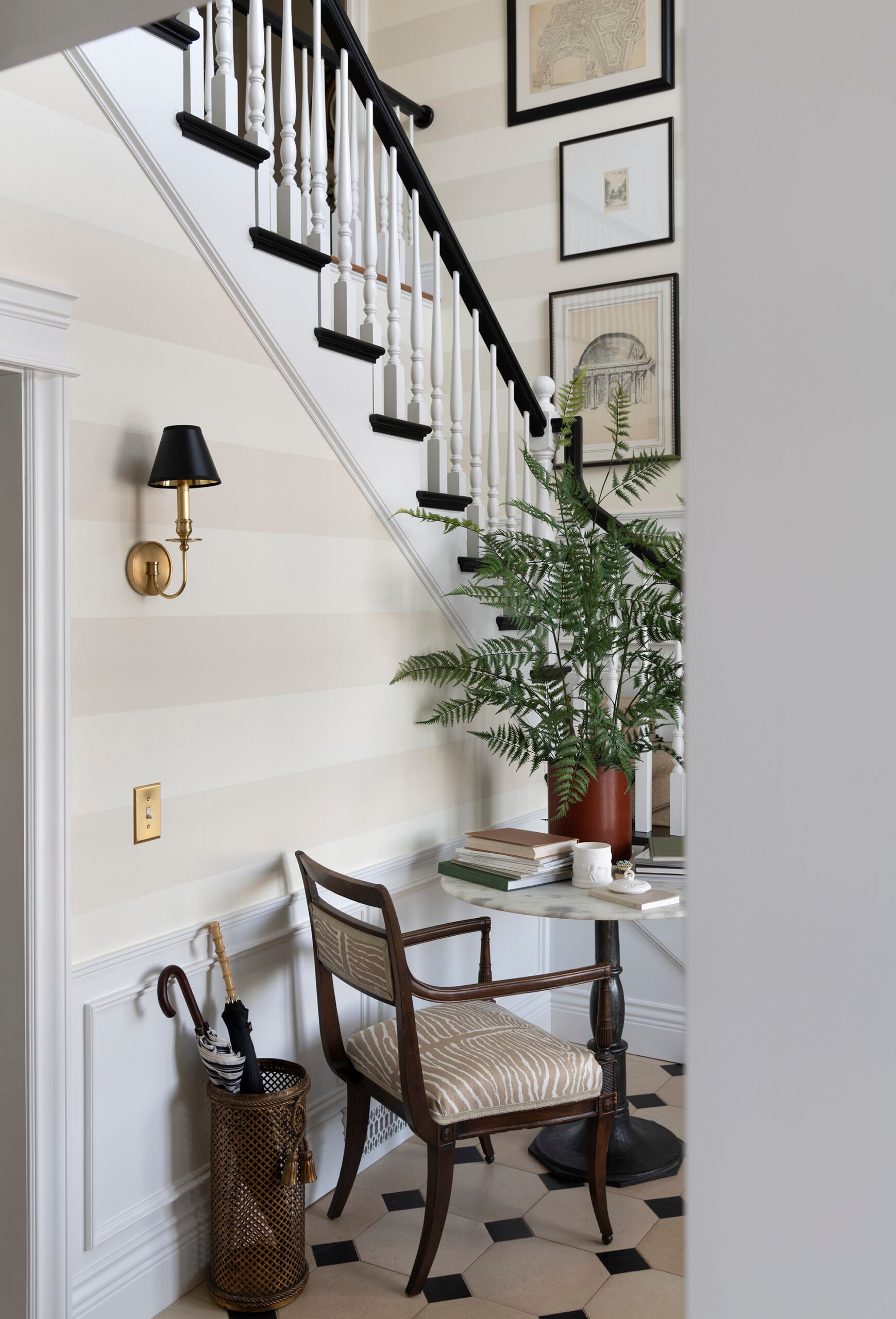Shortly after installing our stair runner, the questions began to roll in about the finishing touch… our stair hardware. If you’ve ever looked at a beautifully styled staircase and thought, “Why does this feel so polished?”, stair rods are probably a contributing factor. In addition to millwork, a classic runner, and a timeless paint combo, these slender metal bars sit at the base of each riser and instantly make your stairs feel more custom, tailored, and intentional. I wanted to dedicate a post to the unsung hero of our stairs… the stair rods. This small design detail brings function and sophistication, so today I’m diving into everything you need to know!
If you’re curious about how to install a stair runner with an easy staircase landing, definitely check out my tutorial! I shared all the links and our step-by-step process. Once you’ve got that installed, hopefully this post will help you choose the appropriate hardware.
What Are Stair Rods?
Stair rods are decorative metal rods installed horizontally at the base of each stair riser, directly over the runner. While they were originally used to help hold runners in place, we typically rely on staples or adhesive for better grip. These days, stair rods are purely aesthetic- but they still add that rich, tailored, designer look I’m always preaching. They give your staircase a polished, finished quality that feels elevated… especially in traditional or colonial homes, like mine.

Why Add Stair Rods?
Despite being decorative rather than functional, here are a few of my favorite reasons to install hardware on a staircase…
- Elevated aesthetic. Stair rods instantly make your runner feel high-end and tailored.
- They add contrast or complement. Choose a finish that either contrasts or blends in with your runner or surrounding decor.
- They’re easy to install. With minimal tools required, they’re a DIY-friendly, yet high-end upgrade.
- They provide visual rhythm. Each rod adds a repetition that guides your eye up or down the stairs.
- They add cohesion. If you’re looking for a way to tie in other metallic finishes, stair rods are a great way to complement or add a repeated design element with light fixture finishes, door hardware, etc.

Choosing the Right Stair Hardware
When it comes to selecting stair rods, it’s all about style, proportion, and finish. Here are a few things to keep in mind…

Rod Style
Most stair rods are round and simple, but some include subtle decorative details. Choose a classic profile for longevity.
Length
Measure the width of your runner and choose rods that are slightly longer—usually 1/2″ to 1″ longer on each side. This keeps the rod centered with a clean reveal.
Finish
Match or intentionally contrast your stair rods, repeating finishes in your home. My three favorites for a timeless look include:
- Antique brass
- Polished nickel
- Oil rubbed bronze
Designer Tip: If your stairs are in or near the entryway, carry your metal finishes from nearby fixtures (like door hardware or lighting) into your stair hardware for a cohesive feel and repeated design element.

Where To Buy Stair Rods
I sourced my stair rods from House of Antique Hardware, after hunting for something classic but not too ornate. Here are a few tried-and-true designer resources I’d recommend:
- House of Antique Hardware – Great for timeless finishes and high-quality options.
- Rejuvenation – They have really beautiful finishes and timeless finial shapes.
- Amazon – You can find a surprisingly wide selection, especially for traditional styles.
- Lowe’s – Simple and elegant options.
- Etsy – Ideal if you’re after something custom or unique.

How to Install Stair Rods
If you’ve already installed your runner (or followed along with my DIY stair runner tutorial), adding rods is a breeze.
What You’ll Need:
- Tape measure
- Pencil
- Drill and screws (provided with most rods)
Basic Steps
- Measure to center each rod on the runner.
- Mark placement for the brackets on both ends.
- Pre-drill holes to avoid splitting the wood.
- Attach the brackets or clips and slide the rod into place.
- Tighten and secure everything with screws and your power drill.
Installation Tip: Cutting a jig or using painters tape as a guide is helpful, so you don’t have to measure every time!
FAQ
No- most runners are secured with staples or adhesive. Stair rods are purely decorative these days, but they do add visual appeal.
Ideally, your rods should be about 1″ longer than the width of your runner- 1/2″ reveal on each side, to keeps things clean and symmetrical. That also allows for runner shift.
Yes- as long as your runner lies flat and is securely installed, stair rods are just the finishing touch.

Related
Looking for more hardware or staircase posts? I’m going to link some of my favorite helpful ones for you below…
- How to Measure, Select, and Install Interior Door Hardware
- Entryway, Staircase, & Hall Reveal
- Entryway Renovation : Demo, Stair Parts, & Flooring
- Is Brass Out? How Polished Nickel is Replacing The Favorite Metal
- Cabinetry Hardware Placement Guide (With Easy Examples)
- Cremone Bolts & How to Use Them
- Designer Trick : Mixing Metals
- Grandeur vs Emtek Exterior Door Hardware
- How to Install a Ceiling Medallion
- How to Install a Stair Runner with an Easy Staircase Landing

If you’ve already invested time and effort into installing a stair runner, stair rods are one of those details that take it to the next level. They’re quick to install, add a metallic finish to your staircase, and insert layered character. I love the subtle sophistication they add- and they’re one of those old-house design elements that never go out of style. Don’t underestimate the power of well-placed hardware- it might just be the jewelry your stairs have been missing.
Let me know if you have any questions in the comment section below… I’m happy to help. We’re enjoying some family time in Montana, but I’ll be back on Wednesday!
The post Stair Rods: The Finishing Touch for Your Stair Runner appeared first on Room For Tuesday.






